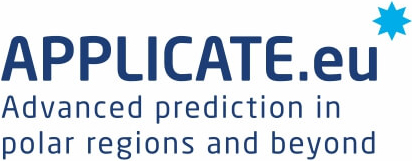Arctic–mid-latitude linkages
Coordinated multi-model experiments with coupled and atmosphere-only models will be performed to assess the impact of substantial Arctic sea ice depletion as expected in the coming decades on the atmospheric and oceanic circulation. The systematic use of coordinated multi-model experiments will minimize the potential model-dependence of the results and conclusions, which is a major concern in most existing studies. Analysis of these experiments will particularly focus on understanding the physical mechanisms, both thermodynamic and dynamic, through which Arctic climate change impacts mid-latitude weather and climate. This will include analysis of the North Atlantic Oscillation (including the potential role of wave-mean flow interactions), the strength of the Siberian High, the potential for sea ice anomalies to initiate Rossby wave trains with subsequent downstream influences over USA, Europe and Asia, and changes in the ocean including the AMOC.
Selected publications
- Day JJ, Sandu I, Magnusson L, et al. Increased Arctic influence on the midlatitude flow during Scandinavian Blocking episodes. Q J R Meteorol Soc. 2019; 145:3846–3862. https://doi.org/10.1002/qj.3673
- Ye, K., & Jung, T. (2019). How strong is influence of the tropics and midlatitudes on the Arctic atmospheric circulation and climate change? Geophysical Research Letters, 46, 4942–4952. https://doi.org/10.1029/2019GL082391
- Smith, D. M., J. A. Screen, C. Deser, J. Cohen, J. C. Fyfe, J. Garcia-Serrano, T. Jung, V. Kattsov, D. Matei, R. Msadek, Y. Peings, M. Sigmond, J. Ukita, J.-H. Yoon and X. Zhang, (2019). The Polar Amplification Model Intercomparison Project (PAMIP) contribution to CMIP6: investigating the causes and consequences of polar amplification, Geosci. Model Dev. Discuss., 12, 1139-1164, doi:10.5194/gmd-12-1139-2019
